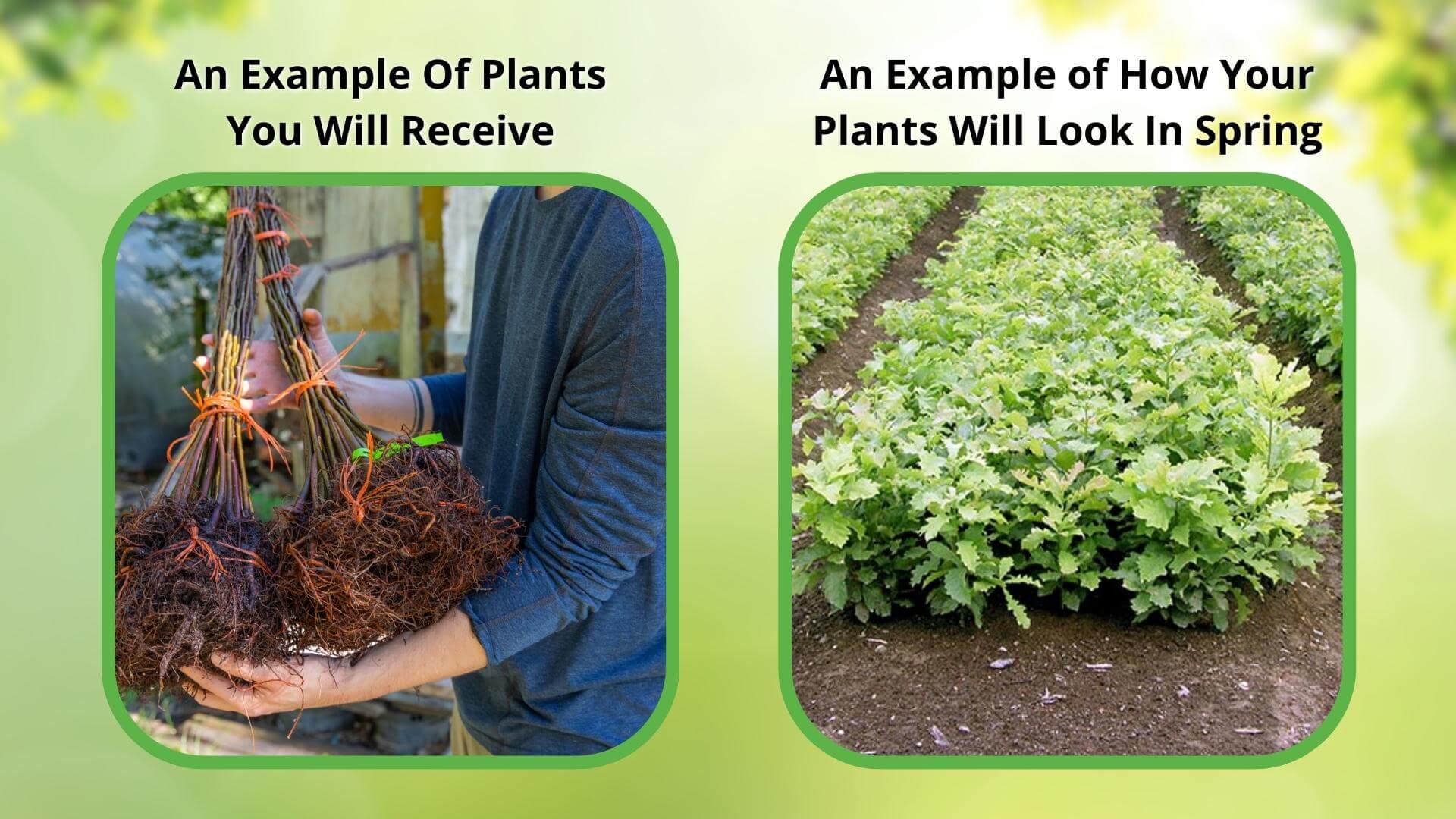Couldn't load pickup availability
🌸When you add 1 plant to cart, it automatically adds the free one
White Dogwood Seedlings | Cornus florida
The best way to add a beautiful, reliable accent to your landscape is by planting White Dogwood Seedlings. This compact, native tree puts on the most gorgeous springtime show with its iconic, white flowers. And the fun doesn’t end there, as this tree keeps the charm going with incredibly rich fall color. Found growing wild along plains or cultivated tidily along fence lines, this versatile tree is a wildly popular choice for a variety of landscape applications.
Plant Details - White Dogwood Seedlings
Family: Cornaceae
Light Requirement: Partial Shade – Full Sun
Water Needs: Moderate
Height: 15-30 ft.
Spread: 15-30 ft.
Growth Rate: Moderate
Bloom Time: Early Spring – Mid Spring
Flower Color: White, yellow, green
Wildlife Value: Provides food & shelter for critters
This tree is adapted to moist, well-drained acidic soil for optimal growth. It can tolerate a spectrum of light exposure but prefers some shade or dappled full sun for some reprieve during hot summer days.
As it grows, this small tree takes on a rounded shape as its height and width are relatively matched. At the end of summer, the tree produces bitter red berries that are a favored food choice for songbirds and other native fauna.
Landscape Uses and Maintenance - White Dogwood Seedlings
To ensure the health of this tree, it is crucial to maintain moisture around the roots particularly in hotter climates. It is highly recommended to apply a few inches of mulch around the base of the White Dogwood Seedlings to help lock in moisture to prevent dry out. Pruning is recommended in the dormant season, from late fall to winter, to help maintain the desired shape. With its beautiful spring blooms, adorable late summer berries, and vibrant fall color, this tree is best grown as a standout specimen that provides year-round interest.
Unique Features of White Dogwood Seedling
White Dogwood Seedlings are grown for their treasured showy spring blooms, but very notably, the flowers are not what they seem. The white ‘petals’ that form are modified leaves known as bracts that surround the actual flowers, which are green and inconspicuous. As the seedlings grow, the branching develops into a unique tiered structure, creating a striking silhouette.
This Is How Your Plants Will Look upon Delivery

Bloom Season
Spring
Bloom/Foliage Color
White
Height at Maturity
Under 25 Feet
Care
White Dogwood seedlings thrive with regular watering to keep the soil consistently moist. Provide good drainage to avoid root rot and protect young plants from pests. Fertilize annually with a balanced fertilizer to support healthy growth.
Plant Reproduction
White Dogwood seedlings spread by birds, wind, and root suckers
Plant seedlings in early spring or fall when temperatures are mild. Choose a well-drained site with the proper sunlight for the tree species. Dig a hole that's deep and wide enough to support but not hamper the root system without bending or crowding the roots. Place the seedling in the hole, ensuring the root collar (where the roots meet the stem) is level with or slightly above the soil surface. Fill the hole with soil, and pack it around the roots to remove air pockets. Water thoroughly after planting and keep the moisture consistent, especially during the first few years, to help the roots establish. Put a 2-4 inch layer of mulch around the base, but keep it away from the trunk to retain moisture and prevent weed growth. Protect the seedlings from pests and physical damage with suitable guards or fencing. Tree seedlings will thrive and grow into strong, healthy trees with proper care.
Shipping date depends on the date displayed and chosen when you order from the product's page.
We only accept returns on plants verified dead. If you think your plants have died, we offer a 1 year warranty, please use use this File a Claim Link to verify dead plants and start with return warranty process.



Caring Tips
How do I care for my White Dogwood Seedlings?
Each box contains detailed care instructions and information about your product. But here's the basics.
Care Tips
White Dogwood seedlings thrive with regular watering to keep the soil consistently moist. Provide good drainage to avoid root rot and protect young plants from pests. Fertilize annually with a balanced fertilizer to support healthy growth.
Light Requirements
White Dogwood Seedlings thrive best in partial shade to full sun. Ideally, they should receive morning sunlight and afternoon shade, especially in hotter climates. This balance ensures vibrant blooms and healthy growth, making them versatile for various landscapes.
Hardy Planting Zones
5 • 6 • 7 • 8 • 9
White Dogwood Seedlings
Can't say anything till spring the size is good the roots look good, but they are sticks until/if they bud out.
Trees were nicely rooted and larger than I expected. They did arrive later than I would have wished—end of November when it was all ready below freezing some nights. Potted and will see how they do.
We purchased a dozen (dormant) white dogwood seedlings and planted them yesterday. They arrived early, and we planted them per the best recommendations for our area. Fingers crossed through the winter and into next spring. We are looking forward to seeing the trees bloom and grow in the years to come.
Tree rootings came quickly and I repotted them in gallon pot. I will grow a year before planting next fall. Thanks for the 1 or 2 extra rootings to cover any possible fails




